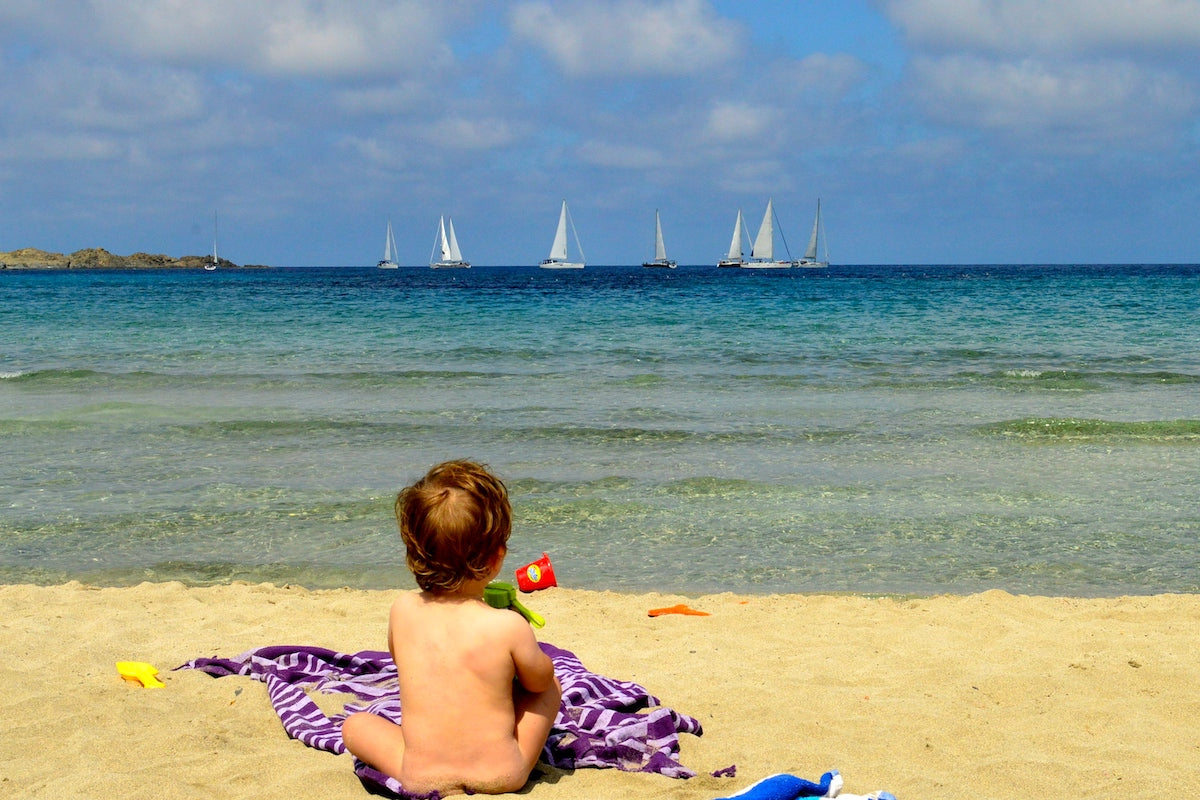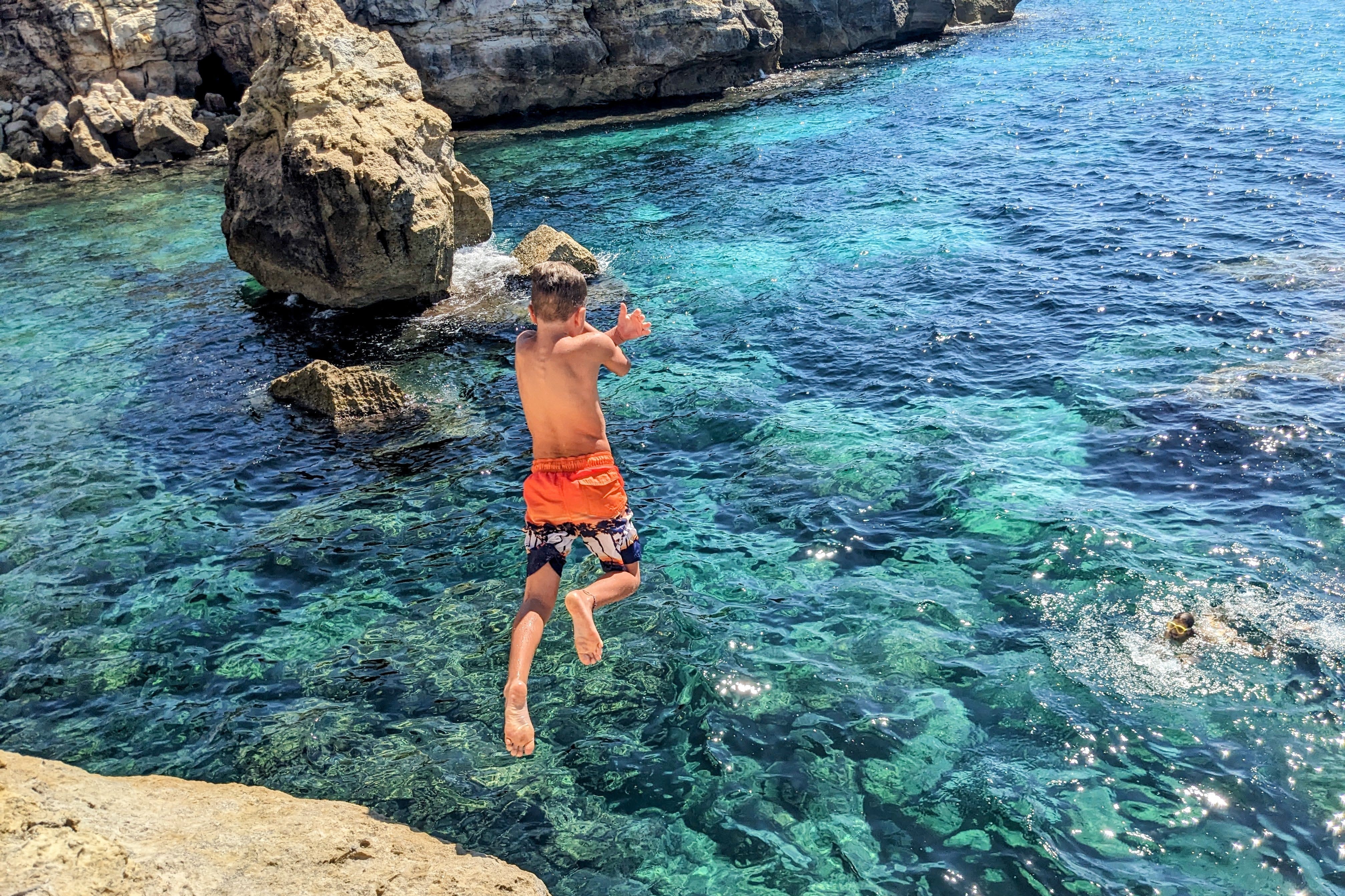Menorca boasts over 120 beaches, each with their own unique identity, and all with stunning landscapes and gorgeous waters...
Menorca’s Beaches: A Coastline of Contrast and Beauty
Menorca’s coastline is a masterpiece of nature, where golden shores and hidden coves meet the ever-changing rhythm of the Mediterranean in some of the most breathtaking hues of blue you can ever imagine. Unlike its Balearic neighbours, the island remains blissfully free from overdevelopment, preserving an unspoiled paradise of diverse beaches that cater to every kind of beachgoer—from sunbathers seeking tranquility to thrill-seekers chasing the wind.
Despite being the smallest of the four main Balearic Islands, Menorca boasts more beaches than Mallorca and Ibiza combined, with over 120 beaches and coves scattered along its coastline. Known locally as platges (or platja when singular and often with Cala in front of the name), Menorca's beaches stand out for their untouched, natural beauty and are so diverse that there is a beach for every mood.

Above: Cala Tortuga, on the north coast, accessible only by bus from Fàvaritx and then on foot on the Camí de Cavalls
North vs. South: Two Worlds of Sand and Sea
Menorca’s beaches are distinctly divided by their geographical makeup. The northern coast is wild and rugged, shaped by ancient geological forces that have left behind red-hued sands, dramatic cliffs, and untouched landscapes. Pregonda and Cavalleria near the village of Fornells are north coast classics that offer some of the most stunning landscapes to enjoy a day basking in the sun and swimming in the sea.
The southern coast is known for its whiter-sand beaches and turquoise waters, often compared to those of the Caribbean. Here, coves such as Macarella, Turqueta, and Mitjana offer crystalline waters sheltered by limestone cliffs and fragrant pine forests. Son Bou is the longest beach in Menorca, offering those who don't mind walking a bit past the crowds to find a more private haven for an all-day beach oasis.
When the Tramuntana northern winds blow strong, locals instinctively head south for sheltered and serene beach days. Conversely, when the wind shifts from the south, the northern beaches become the perfect refuge.

Above: Cala Turqueta on the south side of the island, near Ciutadella, one of the most famous beaches, accessible by bus or by car with limited spaces available for parking
Following the Wind: A Local’s Guide to Choosing the Right Beach
Understanding Menorca’s wind patterns is key to enjoying the best beach conditions. The island’s positioning means that when the wind comes from the north (Tramuntana), the southern beaches are calm. Conversely, when the wind blows from the south (Migjorn), the northern beaches become idyllic escapes. This simple rule is essential for choosing the right spot on any given day.
However, for those who thrive in the wind, Menorca is a playground. When the wind blows, the island’s windier beaches, such as Son Bou (when the wind blows from the south) or Fornells Bay in the north (when the wind blows from the south), provide ideal conditions for windsurfing, kiteboarding, and wing hydrofoiling. The reliable winds and open stretches of water make Menorca a hidden gem for adrenaline-fueled water sports.
Park, Hike or Bus
Some of Menorca’s most stunning beaches require extra effort to reach, but the reward is a secluded paradise far from the crowds. Several beaches cannot be accessed by car, ensuring that they remain pristine and unspoiled. Certain beaches are only accessible by bus during peak season, part of a strategy to reduce traffic and protect fragile ecosystems. Near Ciutadella, popular beaches such as Cala Turqueta have car parks with strict entry limits, meaning early arrival is essential for those driving.
For the truly adventurous, some beaches can only be reached by foot. These require moderate hikes, but the payoff is absolute solitude in some of the most breathtaking spots on the island.
Whichever beach you choose, prepare in advance - many of Menorca's best beaches do not have access to restaurants, shops or bathrooms nearby, so plan accordingly.
Great beaches with parking and amenities nearby
- On the south: Punta Prima, Binibeca, Son Bou, Cala Galdana, Santo Tomas
- On the north: Arenal d'en Castell, Es Grau, Binimel·la, Cavalleria & Sa Mesquida (both require a 10 minute walk down a hill from the parking lot)
Great beaches requiring a walk/hike
- On the south: Binigaus (15 minute walk from Santo Tomas parking), Cala Escorxada (40 minute walk from Santo Tomas parking), Cala Mitjana (15 minute walk from the parking lot), Cala Fustam (30 minute hike from Mitjana)
- On the north: Cala Pregonda (30 minute hike from Binimel·la), Cala Pilar (45 minute hike from the parking lot)
Great beaches accessible by bus and then by foot in the high season
- On the south: Macarella & Macarelleta
- On the north: Cala Presili / Platja d’en Tortuga

Above: Cala Pregonda on the north, a beach you must hike to, but it is worth it!
The Culture of Nudity: A Natural Approach to the Beach
One of the most striking cultural aspects of Menorca’s beaches is the casual acceptance of nudity. Unlike some parts of the Mediterranean where nudity is strictly confined to designated areas, in Menorca, a relaxed and optional perspective on beachwear is the norm. It is common to see families spanning three generations swimming nude, a reflection of the cultural comfort with we as we are. This openness is most noticeable on remote beaches like Cala Pilar or Trebalúger, but even on more popular shores, topless sunbathing and full nudity are simply part of the landscape.
For visitors unfamiliar with this custom, the key is respect and openness. There is no pressure to join in, but there is also no stigma attached to those who do. Menorca’s beaches are spaces of freedom, where the emphasis is on enjoying the natural beauty rather than policing attire.

"Blue Flag" designated beaches in Menorca
A "Blue Flag beach" is an internationally recognized award given to beaches and marinas that meet strict environmental, educational, safety, and accessibility standards, signifying high quality and sustainable practices. In the most recent Blue Flag certification cycle (2024), the following beaches in Menorca were awarded the prestigious Blue Flag status:
-
Son Bou (Alaior): The longest beach on the island, offering extensive sandy shores and a range of services.
-
Cala en Porter (Alaior): A popular beach known for its clear waters and family-friendly amenities.
-
Cala Galdana (Ferreries): A picturesque bay with turquoise waters, surrounded by cliffs and pine forests.
-
Binibeca Nou (Sant Lluís): A charming beach known for its white sands and proximity to the quaint Binibeca Vell village.
-
Punta Prima (Sant Lluís): A family-friendly beach with fine white sand and views of the Isla del Aire lighthouse.
These Blue Flag awards highlight Menorca's commitment to maintaining exceptional beach standards, ensuring a quality experience for visitors and locals alike.

Above: Punta Prima, on the south side of the island, not far from the charming village of Sant Lluís.
Our Favorites on the Northside of the Island
-
Cavallería is a short walk from the designated parking lot, with red sand and great for swimming
-
Es Grau (great for kayaking, boating, snorkeling and one you can choose to keep walking down to get away from the crowds - eat at Tamarindos)
-
Arenal des Castell (really easy to get to, safe swimming, easy to park and features many restaurants right on the beach to choose from)
- Cala Pregonda (it's a hike to get there but worth it- pack lunch)
Our Favorites on the Southside of the Island
-
Cala Galdana (get mojitos at the beach bar) - you can also hike west on the Cami de Cavalls from this beach to other great cove beaches.
-
Son Bou (once you arrive, walk west down a ways to get away from the crowds and you'll find a good spot to camp out for hours. There are three chiringuitos on the east side not far from the parking lot to eat casually for lunch
-
Santo Tomás/Binigaus (eat at Es Bruc)
-
Cala Turqueta (you have to take a bus but it's worth it)- go there when you visit Ciutadella .
-
Binibeca (can be crowded in the high season but it's a classic)



















Share: